|
The Daily Bucket is a nature refuge. We amicably discuss animals, weather, climate, soil, plants, waters and note life’s patterns.
We invite you to note what you are seeing around you in your own part of the world, and to share your observations in the comments below.
|
February 2021
Pacific Northwest
A Nor’easter is blowing through for a few days in western Washington, and while this one is not as cold as they usually are, it’s brought us the only hard freeze we’ve had this winter. Temps mostly in mid 20s, windy out of the NNE in the teens and 20s mph where I am in the northern Salish Sea. We had a little snow when this started a couple days ago, but a lot more forecast for tonight.
Birds have been super busy foraging wherever there might be anything to eat. Seed, suet and hummingbird feeders are very active, and birds are out in the yard also foraging on the ground and in the bushes. Robins are everywhere in my yard these days, on the raised beds, the lawn, in the fruit trees and shrubbery, driveway, deck, you name it. Some tuck into the branches of bushes and just sit there for a while all fluffed up, keeping warm.
One popular “ground” site is on top of the greenhouse, below the feeders. Dark-eyed juncos are abundant everywhere, including there. Juncos will come to the seed feeder itself but they are primarily ground foragers.
 Juncos on roof
Juncos on roof
The walkway between the house and driveway is sheltered by a tree so it gets less snow and the bark there is popular among all the ground foragers.
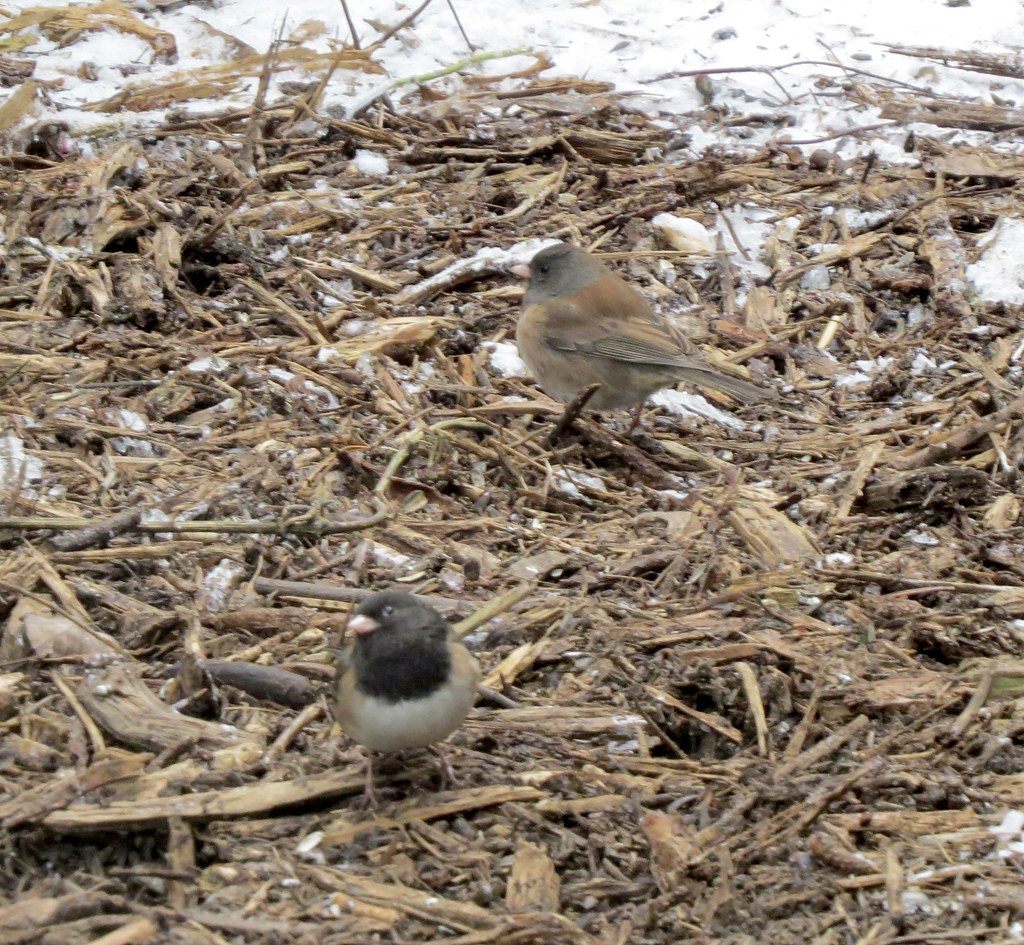 Female (above) and male juncos can be distinguished by their hood color: grey vs black
Female (above) and male juncos can be distinguished by their hood color: grey vs black
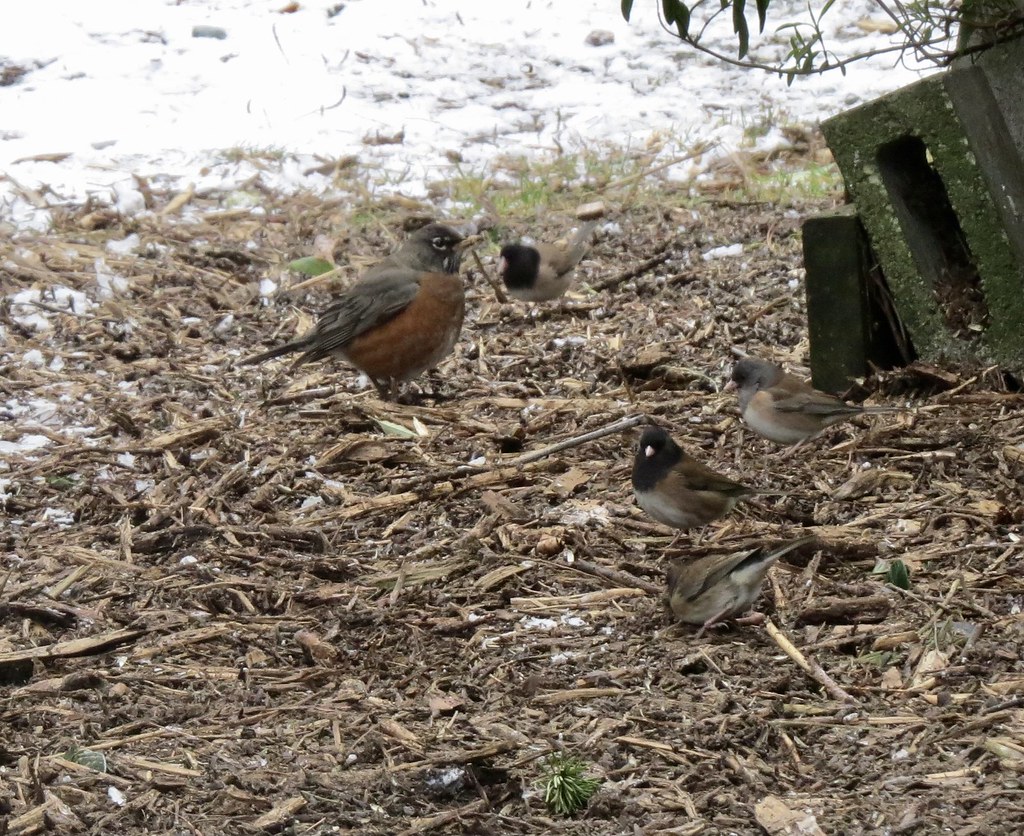 Robin and juncos
Robin and juncos
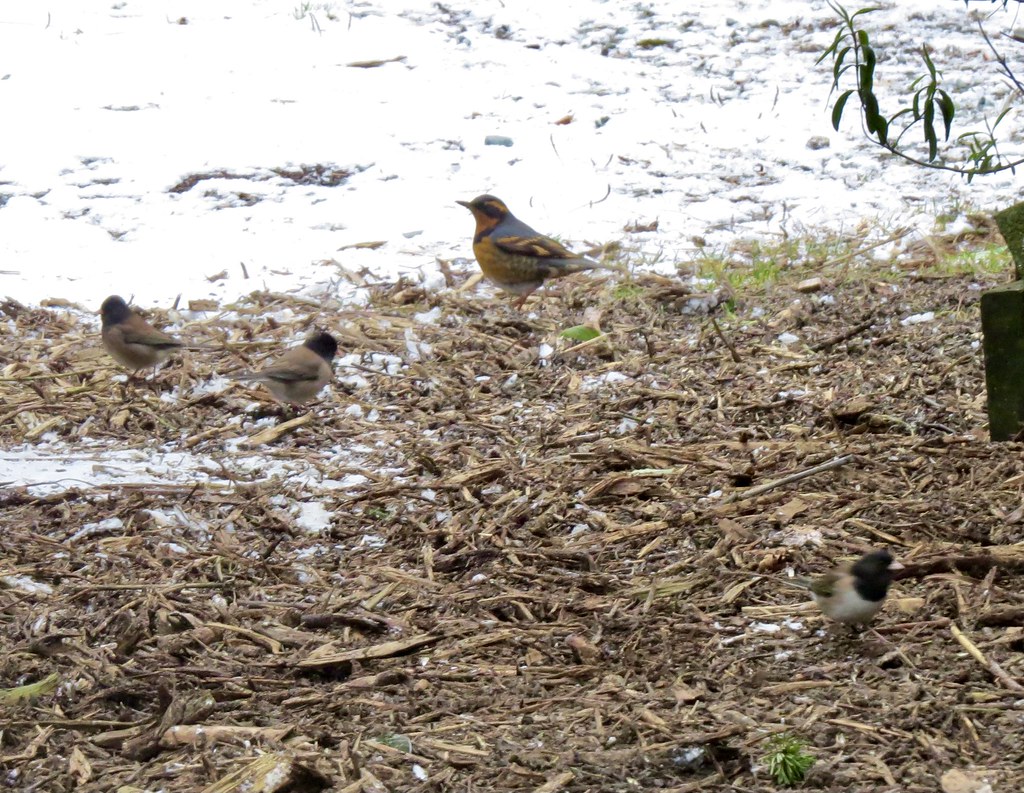 Varied thrush and juncos
Varied thrush and juncos
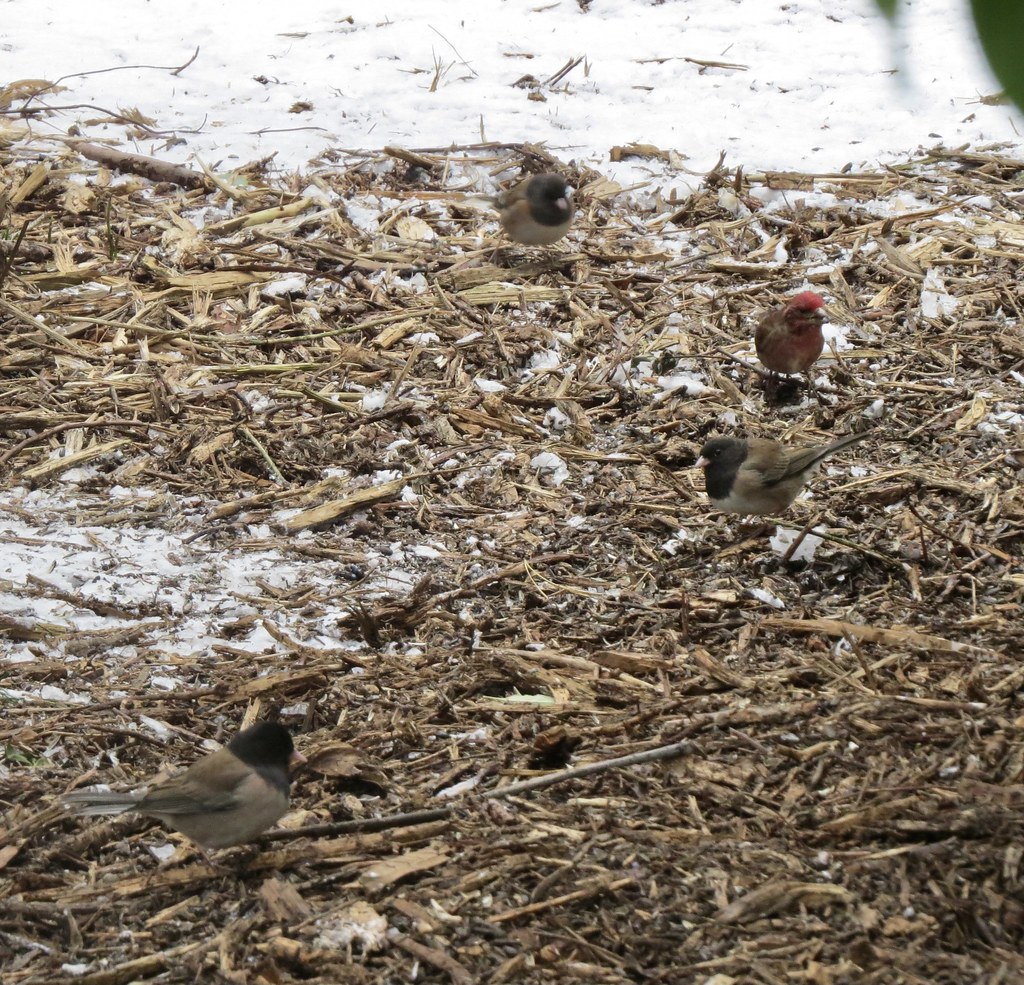 Purple finch and juncos
Purple finch and juncos
Scads of juncos!
Robins don’t hop around as much as the sparrows and finches. They dig holes in the bark with their beaks, while the others peck at the surface.
Juncos, towhee and robin:
.
Bushes with berries are a big interest of winter robins and I have two kinds of shrubs in my yard with berries that persist beyond the rainy season of fall and winter (which rots any soft fruit). Between the two, robins prefer cotoneaster berries. While not as appealing as other NW berries like salmonberries, thimbleberries, serviceberries, salal berries and such, these are what are left in late winter. Any port in a storm. This flock of 20-30 robins has pretty much stripped my half dozen cotoneaster bushes now.
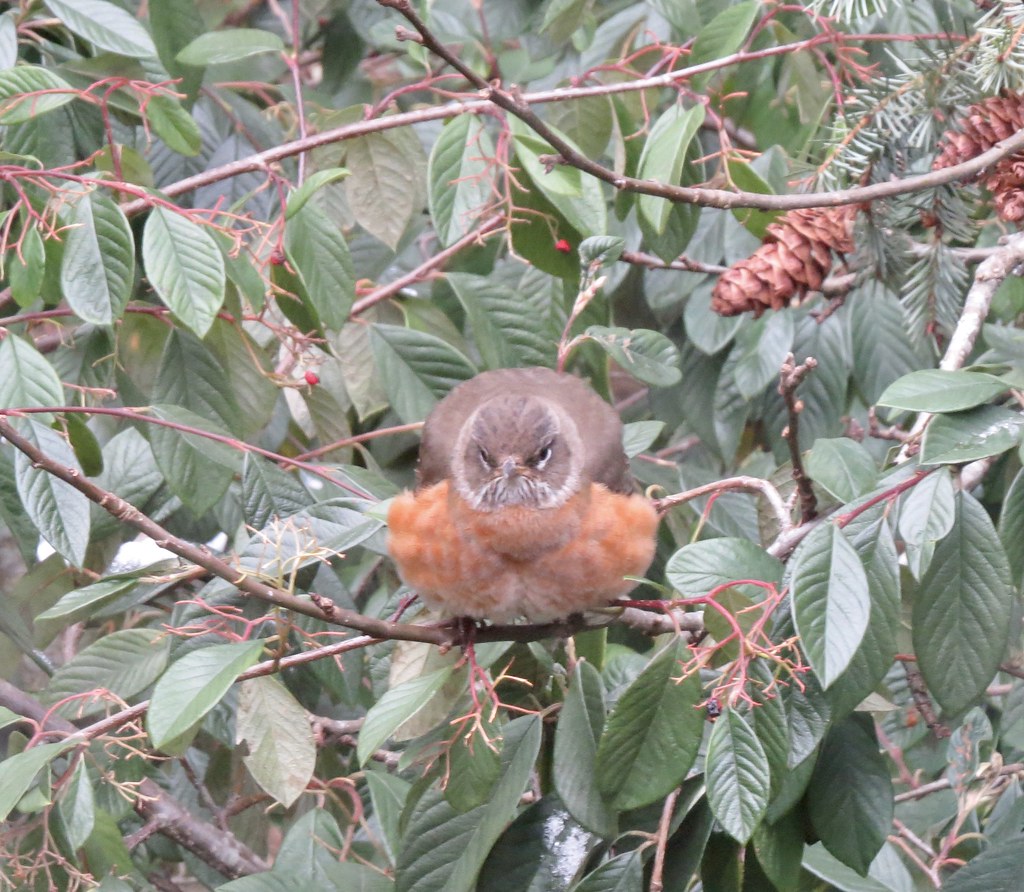 Berries gone - harrumph
Berries gone - harrumph
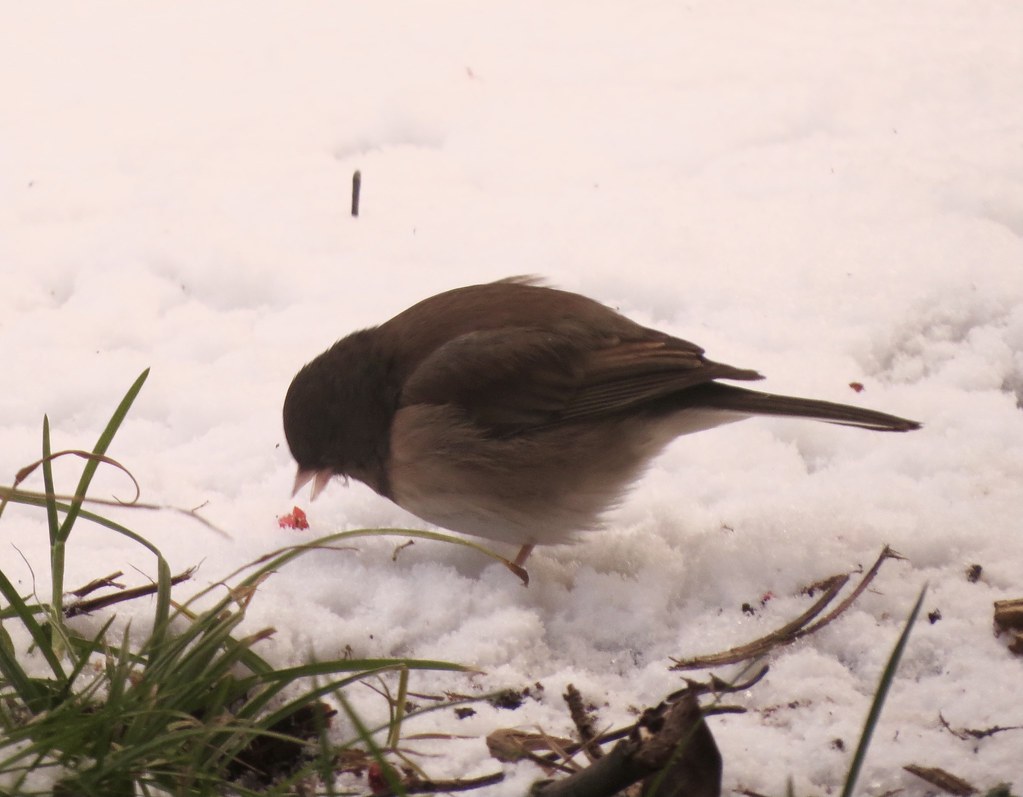 Junco found a dropped cotoneaster berry. I suspect that’s some of what the ground foraging birds are searching for along with seeds and dormant bugs.
Junco found a dropped cotoneaster berry. I suspect that’s some of what the ground foraging birds are searching for along with seeds and dormant bugs.
Viburnum berries are last to be foraged. I think robins have a word in their language for liver or lutefisk that they use for viburnum berries. They eat them though.
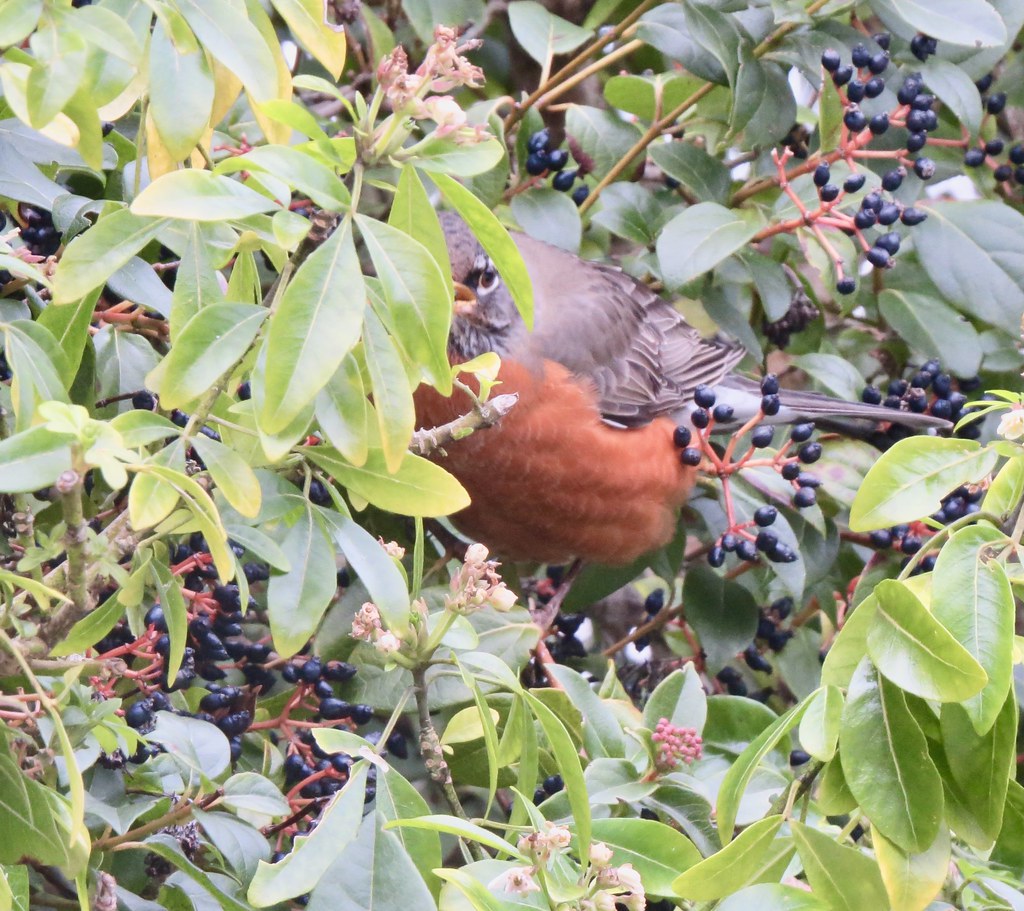
Very short clip of Robin working the berries:
.
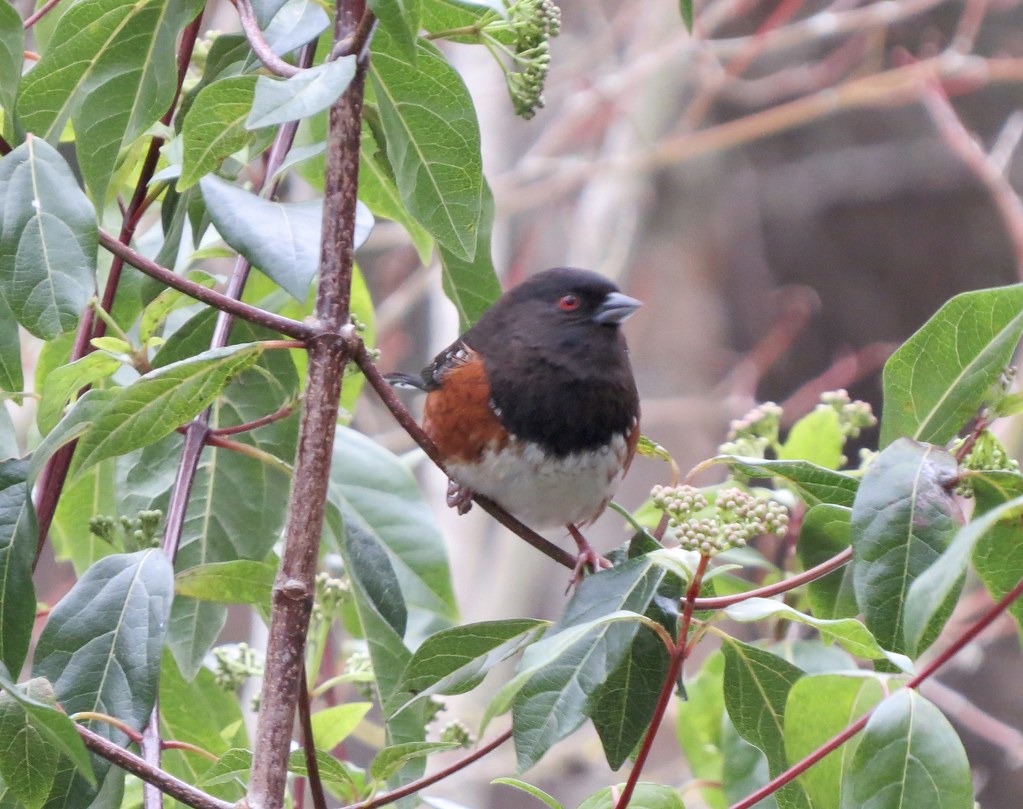 Spotted towhee in viburnum. Those are flower buds —> next winter’s berries
Spotted towhee in viburnum. Those are flower buds —> next winter’s berries
Predators are around foraging too. Every now and then the feeders go quiet, birds decamp or “freeze” in situ. I’ve seen a Sharpie pass through on a number of occasions. Yesterday we saw a hawk perched in a nearby tree, a juv Redtailed hawk.
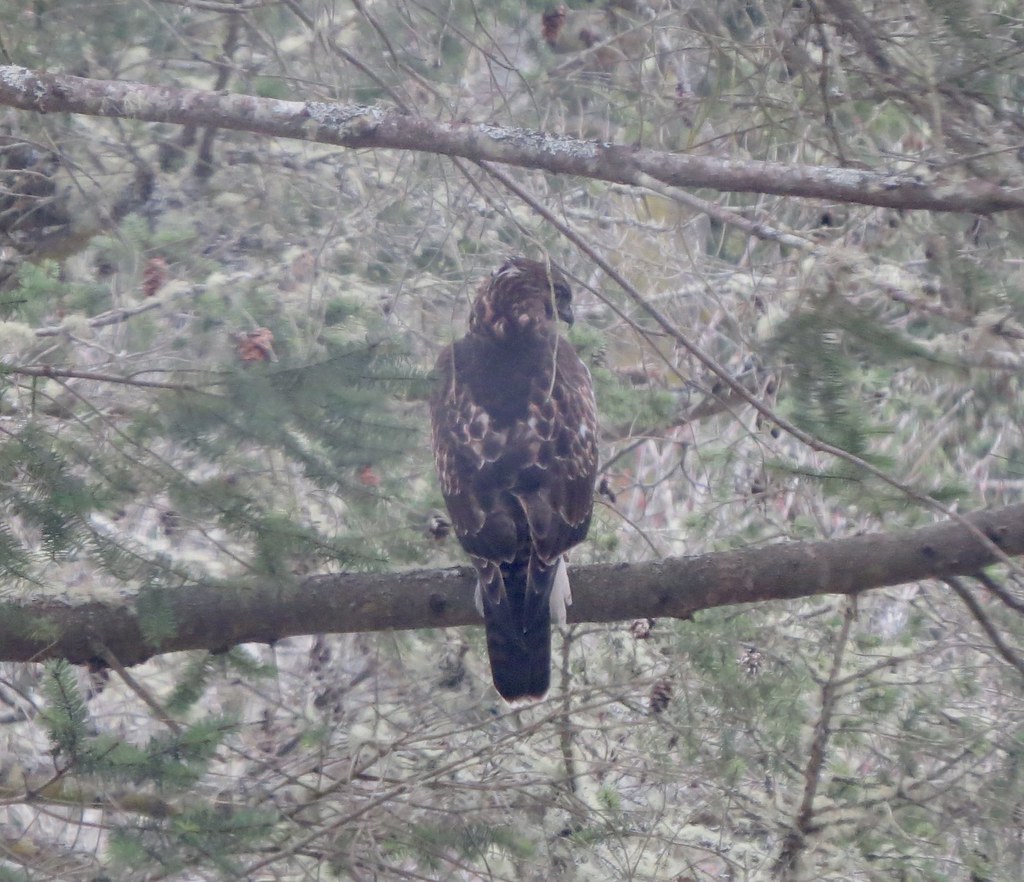 Hawk watching the ground for rodents or little birds.
Hawk watching the ground for rodents or little birds.
Subfreezing weather means we fire up our woodstove. The heat pump just has to work too hard in this kind of weather. But we get these cold snaps rarely, maybe once a year in recent decades.
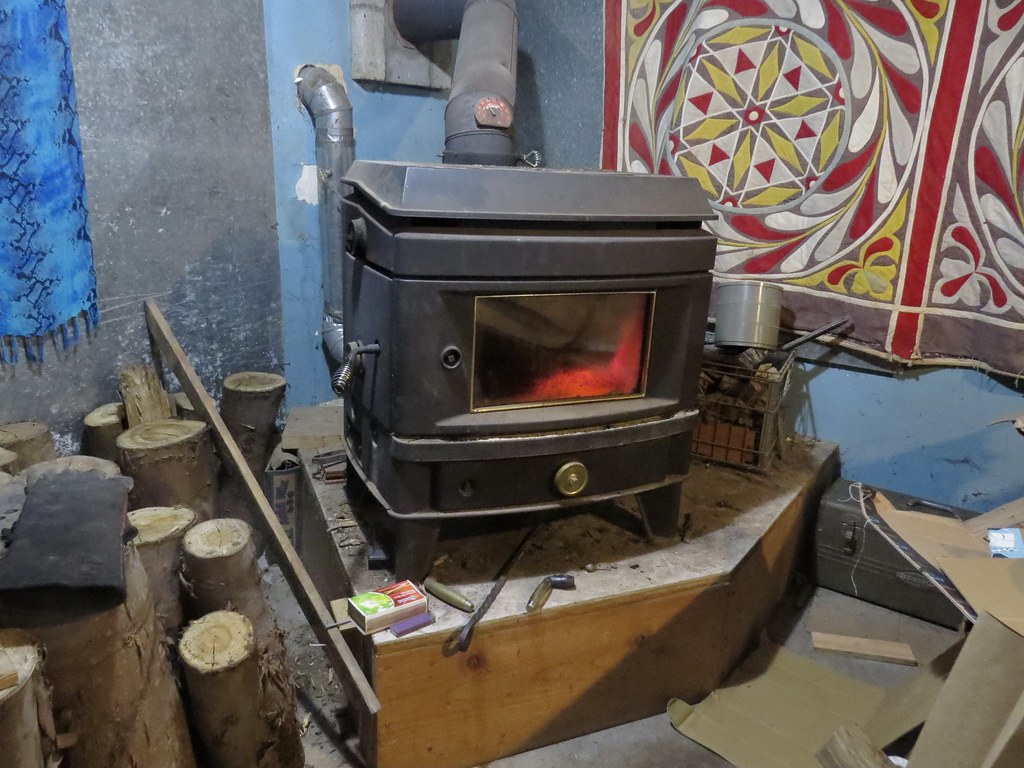 Woodstove going 24/7 for this week of cold weather
Woodstove going 24/7 for this week of cold weather
❄️
Overcast, breezy and cold in the PNW islands today.
WHAT’S UP IN NATURE IN YOUR AREA TODAY?
❄️
|
"SPOTLIGHT ON GREEN NEWS & VIEWS"
EVERY SATURDAY AT 3:00 PM PACIFIC TIME ON THE DAILY KOS FRONT PAGE.
IT'S A GREAT WAY TO CATCH UP ON DIARIES YOU MIGHT HAVE MISSED. BE SURE TO RECOMMEND AND COMMENT IN THE DIARY.
|


